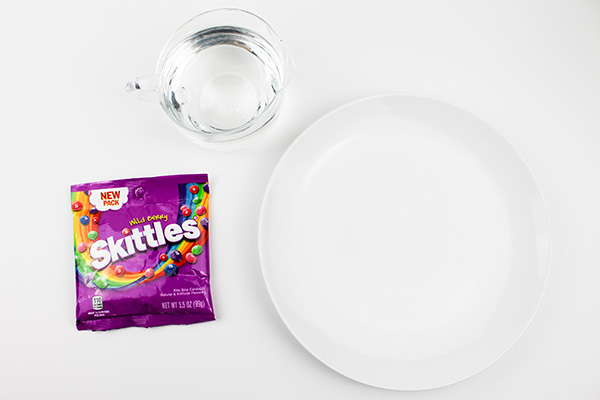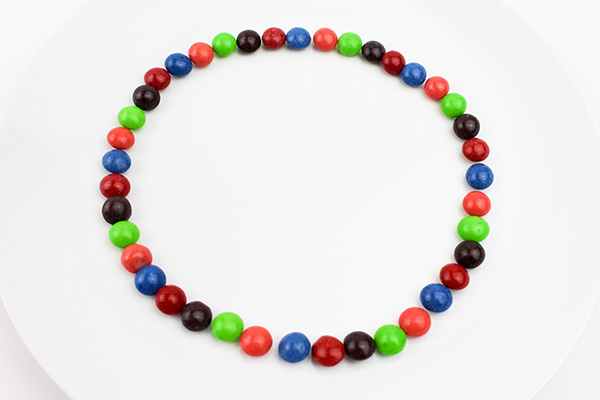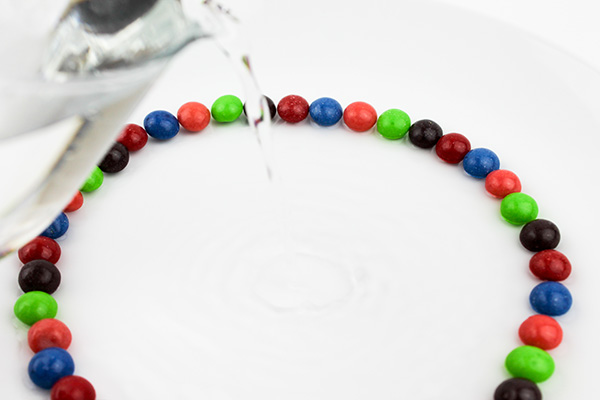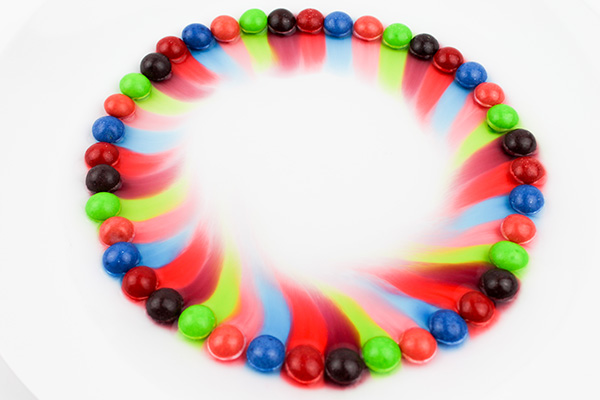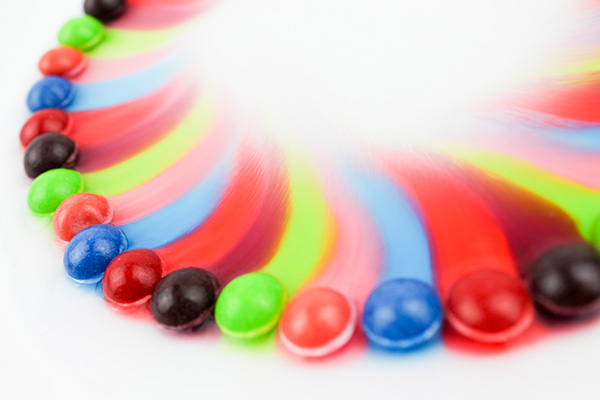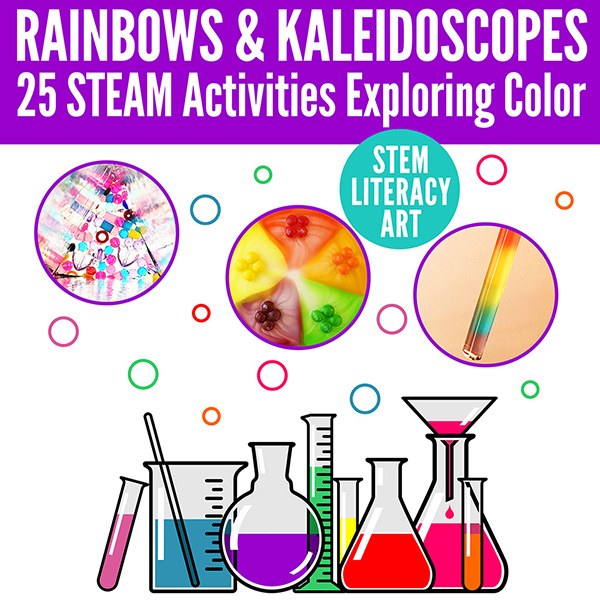Skittles Experiment: Cool Science for Kids
Who knew the science to be learned from a pack of Skittles and a little warm water! This Skittles Experiment is super simple and the results are fascinating. In fact, this is one science experiment that easily fits into the captivating and magical category – just like the magic milk experiment and the DIY lava lamp experiment.
It offers an engaging, purposeful activity for children to practise making predictions, and for developing their observation and science record keeping skills.
The actual science at play involves what’s known as the concentration gradient – and you can find out a little more about how and why skittle science works below the experiment procedure.
Skittles Experiment
You will need:
- 1 package of Skittles candy (for this project we used the Wild Berry combination)
- 1 large white dinner plate
- Warm water
Directions:
Place your dinner plate on a stable surface. Arrange the Skittles in a circle around the edge of the plate. We like arranging ours in a pattern.
You are going to gently pour the warm water into the center of the plate but first make a prediction about what you think will happen when the Skittles get wet.
When you’re ready, pour enough water to cover the bottom of the Skittles. Do not add too much water, you don’t want the Skittles to float out of position.
Wait a few seconds. The colours from the Skittles will start to spread slowly towards the middle of the plate.
Optional: Time how long it takes for the colours to meet in the middle of the plate.
Continue observing until the colours meet in the middle. Talk about why your children think the colours don’t mix.
At the end of the activity, check out the bottom half of the Skittles. You’ll see that the bottom half of the Skittles are now white.
The Science of Skittle Science: Skittle Science Explained
This experiment explores the chemistry concept known as the concentration gradient – that is, that chemicals move from areas of higher concentration to areas of lower concentration in an attempt to equalise the concentration.
As the Skittles start to dissolve in the water, they send the coloured sugar outwards in an attempt to equalise the concentration of sugar in the water. The colours do not mix however as the same amount of sugar has dissolved from each Skittle – the concentration of sugar is already equal.
Extension Ideas
One the colours have met in the middle predict what will happen if you place a sugar cube in the middle of the plate. Test your prediction.
Retry the experiment with both M&Ms and Gobstoppers. What similarities or differences do you observe?
Try hot water versus cold water and observe any resulting differences.
Test alternative liquids such as vinegar, soda water, milk and cola.
For Younger Children
Place an assortment of Skittles on a coffee filter or paper towel/kitchen paper. Let your child drip water onto the Skittles with an eyedropper or plastic pipette. Remove the Skittles and notice the marks left behind on the filter or towel. Invite your child to describe what they see.


